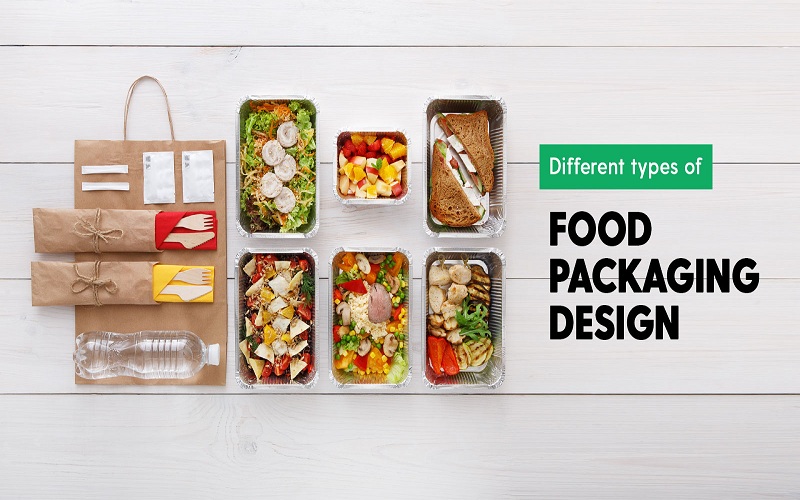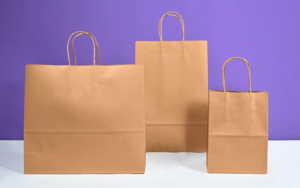Labels on food packaging are essential for promoting food items on store shelves. One of the first things buyers notice when perusing merchandise is the labeling. Consequently, it’s critical for businesses that food packaging labels companies to create labels that are distinctive and appealing to their target markets. Label companies have various tactics at their disposal to improve their brand appeal and visibility by using creative packaging designs and informational layouts.
Make Use of Eye-Catching Colors and Graphics
Using rich, bright colors and attention-grabbing images on packing labels is one of the best methods to grab a customer’s attention. Labels with text-heavy designs or basic solid colors tend to be lost on crowded shelves. To make their products stand out visually, label firms could experiment with vibrant colors, patterns, and graphic features. Without using words, visuals such as product-related graphics, icons, and photos can assist in communicating what’s within. Bright colors and a small amount of text in a stylized font help the design stand out from plain or heavily text-based rivals.
Emphasize Your Best Selling Points
Labels on the packaging must convey the main attributes and advantages that will encourage purchase in addition to drawing attention to themselves initially. Label brands should use a clear and appealing approach to highlight two or three of the most significant selling aspects. It could contain any other distinctive features, ingredients, flavors, portion quantities, certifications, and nutritional data. The most important elements are highlighted by using bullet points, symbols, or underlining specific language. It is ensured that this information is among the first things viewed by placing it prominently close to the front of the packaging.
Stress Portability and Convenience
Convenience plays a significant role in the purchasing decisions made by consumers in the fast-paced world of today. Food packaging sticker label, can highlight how items satisfy customers’ expectations for convenience. For instance, emphasizes that a food item can be microwaved, is quick to open, resealable, single-serve, or doesn’t need to be refrigerated before being used. The appeal is further increased by showing how the serving size is ideal for eating on the go. Stressing convenience features gives time-pressed buyers an incentive to select a product over a comparable alternative.
Utilize hashtags and QR codes
Using contemporary digital components like hashtags on social media and QR codes is a smart method for labels to increase interaction. Customers may use their smartphone to instantly access recipes, coupons, and more detailed product information by scanning the QR code on the front of the package. Relevant hashtags incentivize people to post images of the product on social media, increasing brand awareness and the possibility of word-of-mouth advertising. Tiny details like these give packaging a modern, sophisticated, and engaging sense.
Make a Case for Sustainability Issues
More customers are looking for firms that have great sustainability policies as environmental issues become more prominent on the public agenda. Labels for packaging can draw attention to any “green” features, such as the use of compostable or recyclable materials. Promoting a product’s carbon neutrality, lack of palm oil, or low packaging uses makes it more appealing to environmentally conscious consumers. A brand’s positive impact and attractiveness can be increased by even simple messaging such as supporting responsible sourcing or being created locally if possible. When given the option, consumers will select goods that are consistent with their ideals.
The Requirements for Private Label Cosmetics Quality Assurance?
The market for the best private label cosmetics has expanded dramatically in recent years as people seek out premium goods at reasonable costs. Even while discounts are available with private label brands, people still want high standards of quality and safety for the products they use on their skin. Who then makes sure that private-label makeup lives up to quality standards? Several organizations are involved in developing policies and procedures related to ingredient safety and product testing.
Sectoral Guidelines
Private-label brands and contract manufacturers can benefit from additional guidelines and best practices offered by various industry associations, in addition to the baseline rules set by the FDA. Industry standards and guidelines on safety testing, labeling, and other topics are established by the Personal Care Products Council. They release guidelines on subjects like product testing procedures, ingredient safety evaluations, and good manufacturing practices. Meeting industry-wide quality requirements for private-label brands is facilitated by adherence to Council guidelines.
For natural and organic personal care products, the Natural Products Association offers third-party certification and standards. They have restrictions on artificial and non-natural substances, as well as certain rules for “natural” claims. A private label brand’s dedication to natural and organic formulas is demonstrated by its NPA accreditation.
Third-Party Accreditation
Many ethical private-label businesses go through third-party quality certification, even if it’s not mandated by law, to provide customers with even more peace of mind. Manufacturing facilities, quality control procedures, ingredients, and formulations are assessed by independent certifiers. They carry out audits and inspections of facilities on-site. A private label brand can demonstrate its dedication to ingredient and product safety, and its adherence to industry and regulatory requirements, by obtaining third-party certification. It promotes consumer confidence, particularly for companies that trade on online marketplaces.
Manufacturer and Supplier Guidelines
In the end, the quality and security of the products under its private label brand are its responsibility. Nonetheless, the majority of private label companies contract with suppliers and manufacturers to handle product development and manufacturing. Private label companies must therefore put in place stringent procedures for supplier qualification and assessment. They ought to inspect the facilities of possible suppliers, go over standard operating procedures, and make sure that all relevant standards are being followed. Additionally, private label companies have to keep regular lines of communication and supervision open with their production partners. It helps guarantee consistent quality between batches, even if processes and formulations may change over time.
In summary
Packaging labels are essential for drawing customers and setting firms apart in the hectic retail world. Target audiences will be drawn to food packaging labels produced by companies that deliberately use eye-catching visuals, underline important marketing elements, and highlight pertinent benefits like sustainability and convenience. Truly unique labels have spatial surprises and interactive digital features in addition to text and visuals. With so many options available, labels need to apply design principles imaginatively to make a good impression on customers and effectively raise brand awareness.



